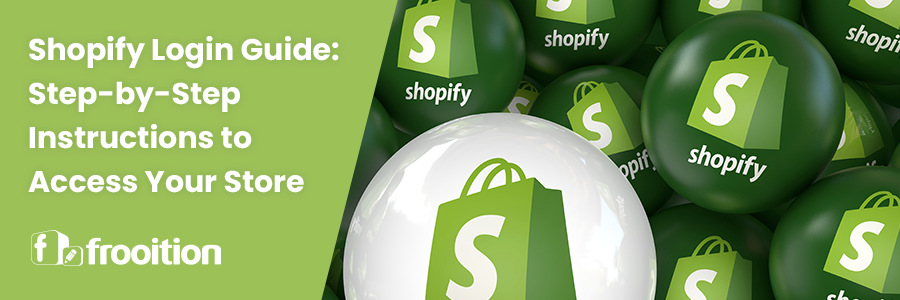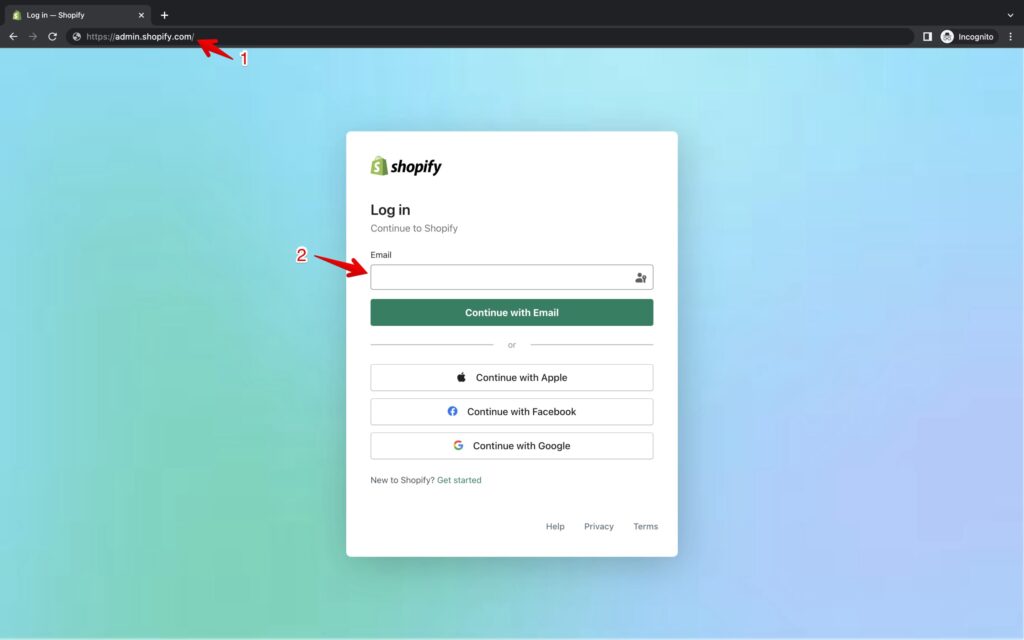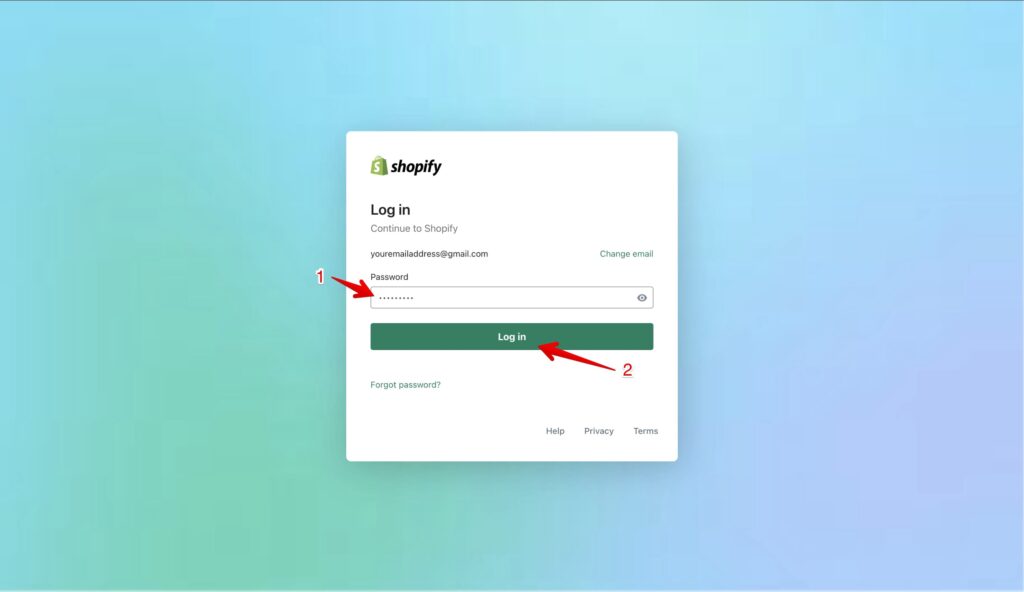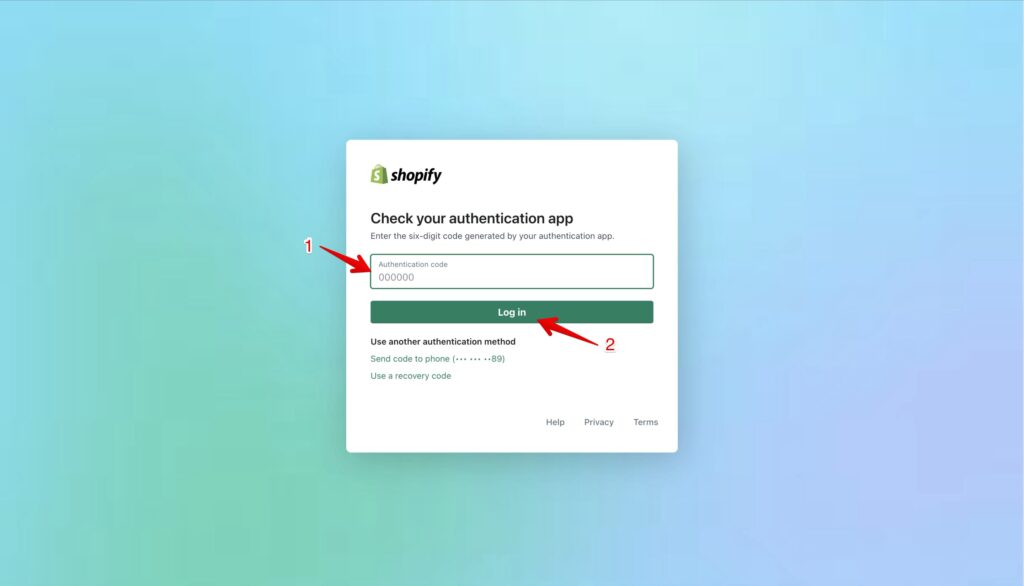
Running a successful ecommerce business starts with seamless access to your Shopify store. Whether you’re a first-time store owner or a seasoned entrepreneur, understanding how to navigate the Shopify login process in 2025 is crucial for managing your online store effectively. With Shopify’s ever-evolving platform, staying updated on the login process, security measures, and troubleshooting tips ensures you can focus on growing your business without technical hiccups.
Promotion – 50% Off Frooition’s Custom Shopify Websites. Claim Here.
This comprehensive Shopify login guide for 2025 will walk you through every step of accessing your Shopify admin dashboard, securing your account, and resolving common login issues. Optimized with high-volume keywords, this guide is designed to help you rank higher on Google while providing actionable insights for managing your Shopify store. Let’s dive in!
Why Mastering Shopify Login Matters in 2025
Shopify powers millions of online stores worldwide, making it one of the most trusted ecommerce platforms. The Shopify login process is your gateway to managing products, tracking sales, and optimizing your store for success. In 2025, with increased competition in the ecommerce space, efficient store management is more important than ever. A smooth login experience saves time, enhances security, and ensures you can quickly address customer needs.
This guide is tailored for:
- New Shopify users setting up their stores. (Access a free trial via: https://www.frooition.com/shopify-design/)
- Existing merchants looking to troubleshoot login problems.
- Business owners seeking to enhance account security.
By following this guide, you’ll gain confidence in accessing your Shopify admin login and managing your store like a pro.
Step-by-Step Shopify Login Guide for 2025
Step 1: Navigate to the Shopify Login Page
To access your Shopify store, start by visiting the official Shopify login page. In 2025, Shopify has streamlined its interface for a user-friendly experience. Follow these steps:
- Open your preferred web browser (Chrome, Firefox, Safari, or Edge).
- Type admin.shopify.com into the address bar or search for “Shopify login” on Google.
- Click the official Shopify login link, which typically appears at the top of the search results.
Pro Tip: Bookmark the Shopify login page for quick access. Avoid unofficial links to protect your account from phishing attempts.

Step 2: Enter Your Shopify Account Credentials
Once on the Shopify login page, you’ll need to input your account details:
- Email Address: Enter the email associated with your Shopify account. This is typically the email you used during store setup.
- Password: Input your password. Ensure it’s the correct one, as Shopify accounts are case-sensitive.
If you’re using a shared or public computer, avoid selecting “Remember Me” to protect your account.
Keyword Focus: Use the same email and password for your Shopify store login every time to avoid confusion.

Step 3: Two-Factor Authentication (2FA) for Shopify Login – Enhanced Security
In 2025, Shopify strongly recommends enabling two-factor authentication (2FA) for all accounts to enhance Shopify security. If 2FA is activated, you’ll need to verify your identity after entering your credentials:
- Open your authenticator app (e.g., Google Authenticator, Authy) or check your SMS/email for a verification code.
- Enter the code in the provided field on the Shopify login page.
- Click “Verify” to proceed to your Shopify dashboard.
Why 2FA Matters: With cyber threats on the rise, 2FA adds an extra layer of protection, ensuring only authorized users can access your Shopify account.

Step 4: Access Your Shopify Admin Dashboard
After successful login, you’ll be directed to the Shopify admin dashboard, your control center for managing your store. From here, you can:
- Add or edit products.
- Monitor sales and analytics.
- Customize your store’s design.
- Manage customer orders and inquiries.
Keyword Tip: Familiarize yourself with the Shopify dashboard layout to streamline your Shopify store management tasks.
Promotion – 50% Off Frooition’s Custom Shopify Websites. Claim Here.
Troubleshooting Common Shopify Login Issues in 2025
Even with a straightforward login process, issues can arise. Below are common Shopify login issues and how to resolve them.
Forgotten Password
If you can’t remember your password:
- On the Shopify login page, click “Forgot your password?”
- Enter your registered email address.
- Check your inbox for a password reset link from Shopify.
- Follow the link to create a new, strong password.
Tip: Use a password manager to store your Shopify login credentials securely.
Account Locked
Shopify may lock your account after multiple failed login attempts for security reasons. To unlock:
- Wait 30 minutes and try again.
- Contact Shopify Support via email or live chat if the issue persists.
- Verify your identity with Shopify Support to regain access.
Keyword Focus: Resolving Shopify account access issues quickly ensures minimal disruption to your business.
Incorrect Email Address
Using the wrong email is a common mistake. To fix this:
- Double-check the email associated with your Shopify store.
- If you manage multiple stores, ensure you’re logging into the correct one.
- Contact Shopify Support if you’re unsure which email is linked to your account.
2FA Verification Problems
If you’re unable to receive or use a 2FA code:
- Ensure your authenticator app is synced with the correct time.
- Check your email or phone for backup codes.
- Disable and re-enable 2FA in your Shopify settings if you regain access.
Pro Tip: Store backup codes in a secure location to avoid being locked out of your Shopify store login.
Browser or Connectivity Issues
Sometimes, technical glitches can prevent login:
- Clear Browser Cache: Clear your browser’s cache and cookies to resolve loading issues.
- Try a Different Browser: Switch to another browser to rule out compatibility problems.
- Check Internet Connection: Ensure you have a stable internet connection.
Securing Your Shopify Account in 2025
With ecommerce fraud on the rise, securing your Shopify login is non-negotiable. Follow these best practices to protect your account:
Use a Strong Password
Create a password that is:
- At least 12 characters long.
- A mix of letters, numbers, and special characters.
- Unique to your Shopify account (avoid reusing passwords).
Example: Instead of “password123,” use something like “Sh0p!fy2025#Secure”.
Enable Two-Factor Authentication
As mentioned, 2FA is a must-have. To enable it:
- Log into your Shopify admin dashboard.
- Go to Settings > Security.
- Follow the prompts to set up 2FA via an authenticator app or SMS.
Monitor Account Activity
Regularly check your Shopify account for suspicious activity:
- Review login history in your account settings.
- Look for unfamiliar devices or locations.
- Immediately report any unauthorized access to Shopify Support.
Avoid Public Wi-Fi
Logging in from unsecured networks can expose your credentials. Use a secure, private connection or a VPN when accessing your Shopify store login.
Optimizing Your Shopify Store Post-Login
Once you’ve mastered the Shopify login process, it’s time to optimize your store for better performance and higher Google rankings. Here’s how:
Keyword-Rich Product Descriptions
Incorporate high-volume keywords like “Shopify ecommerce” and “Shopify store management” into your product descriptions. For example:
- Bad Description: “Blue T-shirt for sale.”
- Good Description: “Shop premium blue T-shirts for men at [Your Store Name]. Perfect for casual wear, crafted for comfort. Shop now!”
Keyword Tip: Use tools like SEMrush or Google Keyword Planner to identify high-traffic keywords relevant to your niche.
Optimize Meta Titles and Descriptions
Craft compelling meta titles and descriptions for every page to boost click-through rates (CTR):
- Meta Title: Keep under 60 characters, include primary keywords (e.g., “Shopify Login Guide 2025 | Easy Store Access”).
- Meta Description: Use 150–160 characters, include a call-to-action (e.g., “Learn how to log into Shopify in 2025. Fix login issues and secure your store!”).
Pro Tip: Focus on high-volume keywords for your bestsellers and category pages to maximize organic traffic.
Publish Regular Blog Content
Blogging is a powerful way to target long-tail keywords like “Shopify login issues” or “Shopify account access.” Create how-to guides, troubleshooting tips, or industry insights to attract organic traffic.
Example Blog Topic: “How to Recover Your Shopify Account in 2025: A Step-by-Step Guide.”
Monitor SEO Performance
Use Shopify’s built-in analytics or integrate with Google Search Console to track your store’s performance. Monitor metrics like:
- Organic traffic growth.
- Click-through rates for meta descriptions.
- Keyword rankings for terms like “Shopify login 2025.”
Keyword Tip: Regularly update your SEO strategy based on performance data to stay competitive.
Promotion – 50% Off Frooition’s Custom Shopify Websites. Claim Here.
Advanced Tips for Shopify Login and Store Management
Use Shopify Apps for Automation
Apps like SEO Doctor can automate meta title and description updates, saving time for large inventories. This ensures your store remains optimized for Shopify ecommerce success.
Manage Multiple Stores
If you run multiple Shopify stores, use a single email address to streamline Shopify account access. Create separate bookmarks for each store’s login URL to avoid confusion.
Stay Updated on Shopify Features
Shopify frequently updates its platform. In 2025, expect new features like enhanced analytics or AI-driven tools. Regularly check the Shopify Help Center for updates to ensure you’re leveraging the latest tools for Shopify store management.
Common FAQs About Shopify Login in 2025
Q: Can I log into Shopify from multiple devices?
Yes, you can access your Shopify store login from any device with an internet connection. Ensure 2FA is enabled for security.
Q: What should I do if I can’t access my Shopify account?
Try resetting your password or contacting Shopify Support. Verify your email and check for account lockout due to failed login attempts.
Q: Is the Shopify login process different for mobile apps?
The Shopify mobile app (available on iOS and Android) uses the same credentials as the web login. Download the app from the App Store or Google Play for on-the-go access.
Q: How do I enable 2FA on my Shopify account?
Go to Settings > Security in your Shopify admin dashboard and follow the prompts to set up 2FA via an authenticator app or SMS.
Conclusion: Take Control of Your Shopify Login in 2025
Mastering the Shopify login process in 2025 is the first step to running a successful ecommerce store. By following this guide, you can access your Shopify admin login, troubleshoot issues, and secure your account with ease. Plus, with SEO-optimized meta titles, descriptions, and blog content, you’ll boost your store’s visibility and attract more organic traffic.
Ready to take your Shopify store to the next level? Log in now, implement these tips, and watch your ecommerce business thrive in 2025!
Call to Action: Bookmark this Shopify login guide for 2025 for quick reference. Share it with your team to ensure everyone can access and manage your store efficiently. For more Shopify tips, subscribe to our newsletter or explore the Shopify Help Center.
Promotion – 50% Off Frooition’s Custom Shopify Websites. Claim Here.








